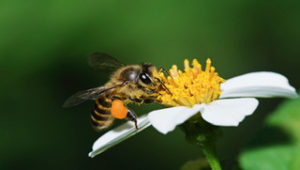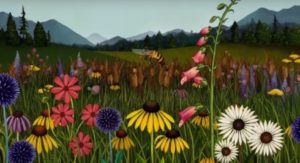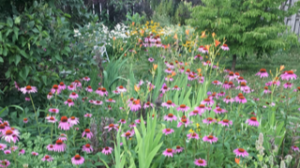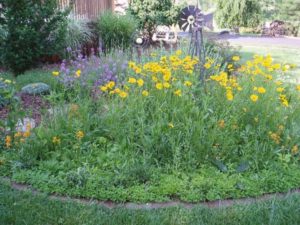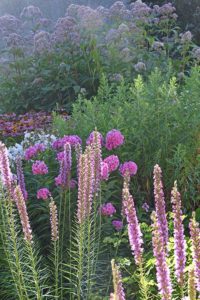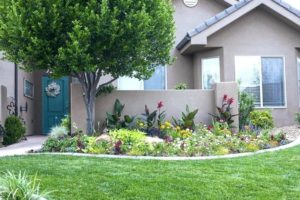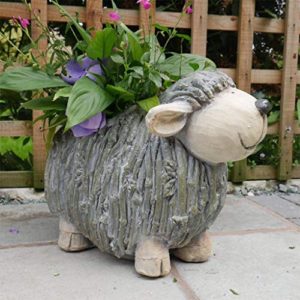The City of Dawsonville, Georgia has been accepted as affiliate as a Bee City USA by the Xerces Society in October 2020! We are one of 12 cities in the state of Georgia. We especially want to thank the City Council of Dawsonville for all their help and encouragement to attain this designation.
Welcome to our page on attracting pollinators to your garden. The information below can be quite useful when designing your garden, choosing native plants, and encouraging others to plant pollinator gardens, all focused on saving our bees and other wildlife.
The Dawson County Woman’s Club offers our services when you are ready to prepare a spot and choose plants along with general information on pollinators. We can even arrange a site visit at no charge.
CLICK HERE to contact the Dawson County Woman’s Club for advice and a site visit. You can also order a pollinator yard sign and “Save our Bees” brochures.
Our Pollinator Garden is also registered with the Rosalynn Carter Butterfly Trail.
Suggestions for preparing your Spot
Suggestions for planting native plants for pollinators
Recommended Native Plants for Georgia
Educational Resources for Teachers
Nectar Gardening for Butterflies, Honey Bees and Native Bees
Smart Landscaping that Looks Intentional and Cared For
Preparing our Spot for a Pollinator Garden at Main Street Park at 415 Hwy 53, behind the Dawsonville City Hall and Food Lion.
In the spring of 2020, we started our pollinator garden at the new Main Street Park at in downtown Dawsonville. We planted examples of many species of native plants that pollinators like and arranged to have them represent blooming times throughout the year.
We encourage you to stop by and walk the paved trails at Main Street Park at 415 Hwy 53 behind the City Hall of downtown Dawsonville. You can also visit the garden at Rock Creek Park that has examples of more plants.





JOIN OUR PLANT A POLLINATOR GARDEN PROGRAM
Even the smallest patch of land can be planted with pollinator-friendly flowers. We want to inspire everyone to plant an insect and hummingbird friendly garden whether it is in a container, front yard, library or school grounds, or at your place of business. If you don’t want to start a new space for a pollinator garden, then consider just adding a few native plants to your already existing display of flowers.
Be the leader in your community to proudly save our bees and other pollinators and designate your Spot with a pollinator sign from the Dawson County Woman’s Club. Home visit included in sign request.
CLICK HERE to contact the Dawson County Woman’s Club for more information on how to Adopt a Spot for pollinators.
Your pollinator garden can be a very rewarding spot for both you and the insects that benefit from your native plants, supplying them with nectar and pollen. Whether you choose a container, raised beds or a small/large garden area, once you have properly prepared for and planted your favorite plants, you will have little need for upkeep. These gardens simply take care of themselves!
 SUGGESTIONS FOR PREPARING YOUR SPOT
SUGGESTIONS FOR PREPARING YOUR SPOT
If your adopted spot is not your personal property, you will, of course, need permission for planting. Feel free to use the information below to explain to the property owner about the importance of pollinators and our fruits and vegetables. This should be an easy step since pollinator plants are beautiful and functional.
Choose a size garden that you can easily plant and maintain. Even a small spot is useful.
Choose a spot that is easily visible to others. After all, your spot is not only for the insects and hummingbirds, but also serves as an educational moment for more gardens. A few plants near an entrance door, sidewalk, parking area will serve well. Don’t hide your spot!
Prepare the soil well. The soil type may determine where you plant. In any case, add some good soil and cow manure to the soil as you dig at least ten inches deep for plants.
SUGGESTIONS FOR PLANTING NATIVE PLANTS FOR POLLINATORS
Pollinators are crucial to the production of most fruits, nuts, and berries on which people and wildlife depend. Over 150 food crops in the United States depend on pollinators including blueberries, apples, oranges, squash, tomatoes and almonds.
Worldwide there are more than 100,000 different animal species that pollinate plants. Insects are the most common pollinators, but as many as 1,500 species of vertebrates also help pollinate plants.
Pollinators, particularly insects, are threatened by a variety of causes, in particular, habitat loss, fragmentation and degradation (including the introduction and spread of invasive plant species); misuse of pesticides; and diseases including parasites carried to the U.S. on introduced species.
To help our native pollinators, choose native plants and consider these guidelines:
Don’t use pesticides. Most pesticides are not selective. You are killing off the beneficial bugs along with the pests. If you must use a pesticide, start with the least toxic one and follow the label instructions to the letter. There are several extremely harmful pesticides that, in many countries, have been banned. Neonicotinoids are a class of insecticides chemically related to nicotine. Like nicotine, the “neonics” act on certain nerve receptors and are extremely toxic to invertebrates. If you use insecticides, please examine the labels and avoid using: Acetamiprid, Clothianidin, Dinotefuran, Imidacloprid, Nitenpyram, Thiamethoxam, and Thiocloprid.
Use local native plants. Research suggests native plants are four times more attractive to native bees than exotic flowers. They are also usually well adapted to your growing conditions and can thrive with minimum attention. In gardens, heirloom varieties of herbs and perennials can also provide good foraging. You might enjoy mixing in a few non-natives, but make sure they are not invasive or harmful to pollinators.
Chose several colors of flowers. Bees have good color vision to help them find flowers and the nectar and pollen they offer. Flower colors that particularly attract bees are blue, purple, violet, white, and yellow. 
Red colors and tube type flowers are best for hummingbirds.
Plant flowers in clumps. Flowers clustered into clumps of one species will attract more pollinators than individual plants scattered through the habitat patch. Perennials should be planted a bit farther apart than annuals. The perennial plants have time to grow throughout each season. Annuals can be planted much closer together to give their fullest attractive look. If space allows, make the clumps four feet or more in diameter. If nothing else, purchase your plants in three’s and plant them together. 
Include flowers of different shapes. There are four thousand different species of bees in North America and they are all different sizes, have different tongue lengths, and will feed on different shaped flowers. Consequently, providing a range of flower shapes means more bees (and other pollinators) can benefit.
Have a diversity of plants flowering all season. Most bee species are generalists, feeding on a range of plants through their life cycle. By having several plant species flowering at once, and a sequence of plants flowering through spring, summer, and fall, you can support a range of bee species that fly at different times of the season.
Plant perennials Not only do perennials often spread and can be transplanted, they require very little attention once established. Perennials should be planted a bit farther apart than annuals. The perennial plants have time to grow throughout each season. Annuals can be planted much closer together to give their fullest attractive look. See below for list of best perennials.
Add items of interest to your plants like rocks, statues, fences, bird feeders, etc. These items also announce to neighbors and visitors that your garden is planned and functional as a pollinator garden, not just a bunch of weeds. See below for more information on this issue.
RECOMMENDED NATIVE PLANTS FOR GEORGIA
(Some of these recommendations are not truly native. Choose your preference but aim for a
70% native to 30% non-native ratio.)
FLOWERS: These species require at least six hours of sunlight to bloom well.
Allium (Allium spp.) **spring
Anise-Hyssop (Agastache foeniculum) **summer
Aster (Aster spp.) **summer
Beebalm (Monarda sp.)* **summer
Black-Eyed Susan (Rudbeckia hirta)*. **summer
Blazing Stars (Liatris spp.)**summer
Boneset (Eupatorium sp.)**late summer, fall
Butterflyweed (Asclepias tuberosa)**summer
Buttonbush (Cephalanthus occidentalis)**summer
Cardinal Flower (Lobelia cardinalis)* **summer
Common Milkweed (Asclepias syriaca)**summer
Columbine (Aquilegia vulgaris) **spring
Coneflowers (Echinacea purpurea)**summer
Coreopsis (Coreopsis spp.)* **summer.
Cosmos (Cosmos spp.)* **summer
Dianthus Family (Dianthus spp.)**summer
Goldenrod (Solidago spp)*. **fall
Ironweed (Vernonia noveboacensis)* **fall
Joe-pye-weed (Eutrochium fistulosum)**fall
Lantana (Lantana camara)**summer
Marigold (Tagetes spp.)**summer
Mexican Sunflowers (Tithonia rotundifolia)**summer
Petunia (Petunia x hybrida) **spring
Salvia (Salvia spp.)*. **summer
Shasta Daisy (Leucanthemum spp.)**summer
St John’s Wort (Hypericum **spring
Sunflower (Helianthus spp.)**summer
Swamp Milkweed (Asclepias incarnata) **summer
Swamp Verbena (Verbena hastata) **summer
Tall Verbena (Verbena bonariensis)* **summer
Thistle (Cirsium discolor)* **summer
Violet (Viola spp.) **spring
Woodland Stonecrop (Sedum ternatum) **spring
Yarrow (Achillea spp.) **spring
Zinnia (Zinnia elegans**summer
*Indicates an aggressive species likely to spread into your entire spot. Of course, these can be transplanted to your friends and neighbors!
**Indicates bloom season
SHADE PLANTS: For areas with less than four hours of sunlight.
Jacob’s Ladder (Polemonium caeruleum)
Cicely (Myrrhis odorata)
Virginia Waterleaf (Hydrophyllum virginianum)
Bishop’s Cap (Mitella diphylla)
Violets (Viola spp.)
Solomon’s Seal (Polygonatum biflorum)
Bloodroot (Sanguinaria canadensis)
Dutchman’s Breeches (Dicentra cucullaria)
Bellwort (Uvularia grandiflora)
Large-leaved Aster (Eurybia spp.)
Wild Geranium (Geranium maculatum)
SHRUBS:
Blueberry (Vaccinium sp.)
Elderberry (Sambucus sp.)
Holly (Ilex sp.)
Hydrangea (Hydrangea sp.)
VINES:
Crossvine (Bignonia capreolata)
Passion Flower (Passiflora incarnata)
Poison Ivy (Toxicodendron radicans)
Trumpet Vine (Campsis radicans)
Virginia Creeper (Parthenocissus quinquefolia)
TREES:
Chaste Tree (Vitex agnus-castus)
Flowering Dogwood (Cornu florida)
Redbud (Cercis canadensis)
Tulip Poplar (Liriodendron tulipifera)
ADDITIONAL RESOURCES
Attracting Native Pollinators
www.xerces.org/books
The Xerces Pollinator Conservation Resource Center
www.xerces.org/pollinator-resource-center
Lady Bird Johnson Wildflower Center
www.wildflower.org/conservation_pollinators
EDUCATIONAL RESOURCES FOR TEACHERS
National Agriculture in the Classroom
http://agclassroom.org/
Green Gardens, Educations and Designs
www.greengardensedu.com
Groundworks
www.groundworksomerville.org/programs/youth-programs/
Rosalynn Carter Butterfly Trail.
Monarchs Across Georgia
www.eealliance.org/monarchs-across-ga
Contact your local Extension Service Office and local Master Gardeners
NECTAR GARDENING FOR BUTTERFLIES, HONEY BEES AND
NATIVE BEES
By Michelle Peterson, St. Lucie County Master Gardener
Plants produce nectar as a means of attracting insects, birds and other potential pollinators. One of the greatest benefits of gardening with nectar-producing plants is being able to provide an attractive habitat for a great number of wildlife, particularly butterflies, honey bees and native pollinators. A standard nectar garden includes a mix of annuals, perennials, herbs, shrubs and trees. Although there are many commonalities in nectar gardens, each has specific requirements when attracting a specific pollinator.
- Prefer red, orange, pink and yellow flowers
- Like trumpet-shaped flowers that hold sweet nectar
- Need species-specific host plants that provide shelter, camouflage and larval food.
- Honeybees:
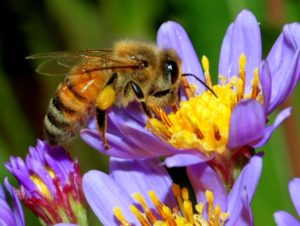
- Prefer yellow, white, blue and purple flowers – can’t see the color red
- Like daisy-like flowers with broad petals that offer a large landing pad
- Need pollen as well as nectar to feed the hive
- Native Bees:

- Prefer fruiting trees and shrubs and native plants
- Have short life spans, and like a variety of blossoms throughout the year
- Are largely ground-dwelling and prefer native soil that free of pesticides and fertilizers. Butterflies and bees also like shallow mud puddles where they get their source of water and minerals.
- Hummingbirds (can’t forget them)

- Prefer red, orange and purple flowers.
- Tubular shaped flowers work the best.
- Most plants that attract pollinators require full sun (a minimum of 5 to 6 hours of light a day), so it may be more of a challenge to attract bees and butterflies to your shade garden, though not entirely impossible.Pesticides will not only keep pesky bugs away, but also the ones that you’re trying to attract. Be very judicious in your applications, and choose spot treatments over systemic.Avoid planting the red flower passion vine (Passiflora racemosa) which can be poisonous to butterfly caterpillars.
Also, be cautious about toxic plants like Yellow Jessamine aka Carolina Jasmine (Gelsemium sempervirens) and White Ti Ti (Cyrilla racemiflora ) which are poisonous to bees.
SMART LANDSCAPING THAT LOOKS INTENTIONAL AND CARED FOR
Space Plants Wisely. Sometimes we make planting errors that negatively affect the look of a space. One of these is when we plant our annuals too far apart. Sometimes this is because plants are expensive and the number needed to fill a space was underestimated, and other times the spacing instructions that came with the plant are misleading. In order to accurately space plants you need to know your USDA planting zone. In USDA Zones 2-5, annuals may need to be placed closer together by as much as a third to a half as close as the tags say. The northern growing season for annuals is five or six months, not the eight months that may be assumed on the planting tag. Space plants too far apart, like twelve inches for a salvia, and they won’t fill out and start touching leaves until right around the first fall frost.
On the other hand, perennials, like shrubs, are often spaced too closely together. As they grow to their full size they are crowded and look messy. Sometimes, they are pruned to within an inch of their lives when mature to keep from crowding out other landscaping. It is important to consider their full size when planting, even if it looks bare when they are first planted. Most perennials need to be spaced around eighteen inches apart; many larger perennials are best planted twenty-four or even thirty inches apart.
Massing and Drifting. Clustering plants, rather than just using one of everything, can really create a rhythm in an otherwise wild yard. One plant alone can lose a lot of its impact. Also called massing, or drifting, larger clumps of single varieties are known to attract certain pollinators because of the efficient foraging they offer, making them smart for wildlife too.
Think High and Low. Crisp edges and bold patterns in landscaping are another strong cue of management. One way to add this element to a space is to think about elements that are both high (like large shrubs and trees) and low (like many flowering annuals and grasses). All of one or the other can make a space look flat. Turns out this is good for wildlife as well since different animals utilize different kinds of structure for foraging, hiding, reproducing, and displaying. The more a yard provides, the greater diversity of wildlife it has the potential to support.
Line of Sight. Removing some of your vegetation makes the house visible from the street. This is one of those tricks for improving perception of landscaping. House is hidden; yard is seen as unkempt and overgrown. House is visible; yard suddenly seems cared for.
Mix Woody and Herbaceous Plants. Include both herbaceous plants and woody ones, like trees and shrubs. Often doing this will help you bring that “high/low” dynamic into a space, but there are some woody plants that aren’t high at all. Even so, these bring interest and a solidness to a space as the seasons change and herbaceous plants grow and die around the woody ones. A solid mix can also help solve some of the spacing issues described above.
Containers, Raised Beds, Structures, Other Objects. Non-plant materials can go a long way towards defining spaces in your yard. Massive planter boxes elevate an other-wise messy collection of plants. You can accomplish this with a variety of materials such as rocks, paths, containers, and walls.
Wildlife-friendly Elements. Nest boxes, bee houses, and bird feeders and baths are another clear visual indicator to passersby about the intentions of your landscape. Sprinkling these throughout your landscape can help people see that your planting choices are for the birds (or the bees).
Just Add White? Many landscapers swear that adding a white element to a garden in the form of a painted fence or house, is often interpreted as a sign of investment in a property by onlookers.
POLLINATOR LINKS
www.beeculture.com
Information on managed honey bees
bugguide.net
Insect identification and information.
Butterflies and Moths of North America (BAMONA)
https://www.butterfliesandmoths.org
Butterfly and moth identification and information;
host plant information.
http://extensionpublications.unl.edu/assets/pdf/g2256.pdf
https://crownbees.com/
Bee hotels
thehoneybeeconservancy.org/
honeybeesuite.com/
Insect Identification for the Casual Observer
https://www.insectidentification.org/
Insect ID by type.
https://www.monarchwatch.org
Education, conservation and research on monarch butterflies.
North American Butterfly Association
https://www.naba.org
Butterflies, butterfly gardening, certification program
www.pollinator.org
Pollen Specialist Bees of the Eastern United States
https://jarrodfowler.com/specialist_bees.html
www.xerces.org
Sharp-Eastman Nature Photography
https://www.sharpeatmanguides.com/wild-bee-id-guide-new-york
Wild Bee ID Guide with incredible photos.
For more information on Butterfly Gardens, please visit the Rosalynn Carter Butterfly Trail.
WildOnes: Nativars: Where do they fit in?
www.wildones.org/resources/nativars






